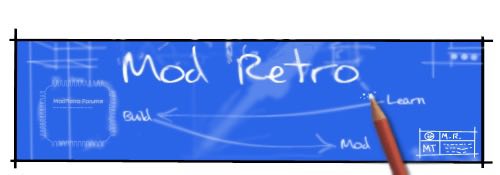I dont have any plans drawn up, but Im pretty much the expert on this sorta thing.
The standard design for wrist mounted flamethrowers is pretty simple. (And please note that I hate it and its bad and unsafe and ugly).
Basically it uses the push valve mechanism on the can of butane (Generally standard 1oz size, though these are expensive and small) with a simple pull cord to tie it to wrist flexion. Then a tube, usually standard 1/16th ID RC fuel line, is run from the can to the palm. Then when you pull your wrist back, fuel squirts out. Add a flyback circuit to generate a spark through which your fuel will fly, and bam, flamethrower. However, I do not recommend building this design. Its an unsafe design, uses a (relatively) expensive fuel source, and, really, wont get you that much fire. Of course, the startup cost, of making one like that is significantly lower than what I recommend building. You could walk to the hardware store and probably get everything you need for just shy of $30. I really really recommend against it though. It works, and its fun, but the design has severe safety flaws, mostly because it has no flow control, and is entirely push fit. What happens is, the tube freezes and snaps, or comes off, right at the mouth of the butane can. Now, its relatively unlikely, but this can lead to having a jet of flame flying directly onto your upper arm. The real danger here, is that there is a possibility that releasing your wrist, and shutting off the flow, would then cause a back-flow detonation of the fuel cylinder. Now, like I say, this is unlikely, but would you really take the chance of having a small grenade going off on your arm? Additionally, since there is a total lack of any sort of nozzle assembly, these types have a tendency to burn back and light the end of the tube. That isn't a huge problem, but you can get plastic burns and such on your palms, and you'll have to replace your plastic tube rather often.
My personal designs tend to cost a lot more, but they are far far safer, and more fuel efficient. Unfortunately, I use high precision micro-pneumatic components from a German company, and you need to buy those parts through a broker. However, the safety and versatility they afford me, make it all worthwhile. Plus I can get the stuff to build fittings for propane cylinders and such, allowing me to use cheaper, higher pressure fuel sources. And more fire for less money feels good.
And for the record, I have had a butane cylinder blow up on me. Fortunately, it was 95% empty, and was not on my wrist. It ruptured the can and spewed enough fire that it would have been really unhealthy to have on my arm. would either cut deep into my arm and bathe it in flame, or shot me full in the face with a jet of ~2800°f fire.
In any case, I have to go do some stuff right now, but if you want I can provide far more detail later.
